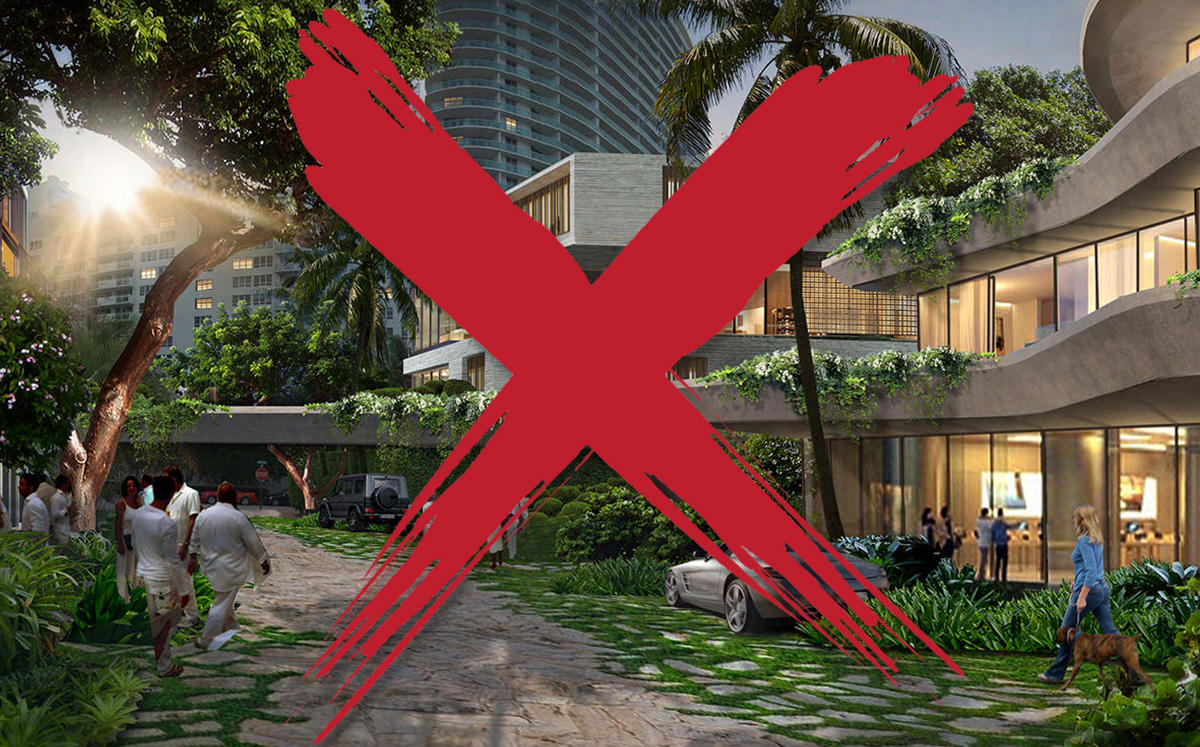Trending
Todd Glaser kills plan for 15-acre mixed-use development in South Beach
After criticism from Miami Beach's planning department, Glaser withdrew the West of West project and said he won't bring it back without a community outcry

Developer Todd Michael Glaser killed his plans to build a 15-acre mixed-use district in western South Beach, saying he won’t pursue it unless there’s an outcry from area residents and property owners demanding it.
Glaser said he withdrew his West of West overlay district proposal a day before Wednesday’s Miami Beach Land Use and Development Committee meeting after city planners criticized aspects of his plan, including allowing restaurants and retail in what is now a largely residential area.
“This was the biggest opportunity for Miami Beach to shine worldwide and show that it’s coming back from Wynwood and the Design District, because [people] want to see something that’s innovative,” Glaser told The Real Deal.
Commissioner Ricky Arriola, who chairs the committee, said he liked the WOW District concept and hopes that Glaser will bring the plan back. “There is some good, strong, community support for this,” Arriola said during the meeting, later adding: “I hope this doesn’t die.”
Glaser, along with real estate investors Jarrett and Sean Posner, Fred Carlton, and Charlie Ratner, had proposed creating an urban community resistant to flooding and sea level rise designed by Miami Beach-based Domo Architecture + Design. It would have elevated promenades and parks between 16th Street, Bay Road, 14th Street, and the Alton Road alleyway. As the “West of West” moniker implies, most of the proposed district is west of West Avenue. It’s a sector that’s already located within the West Avenue Bay Front Overlay, a residential district of single-family homes, small apartment buildings, and low-rise condominiums that allows for new development up to 50 feet in height as well as limited office and bed & breakfast type hotels.
Glaser said he and his partners want to build within that 50 feet requirement. However, besides residential units, Glaser also wants to be able to construct retail stores up to 3,500 square feet in size, restaurants with up to 100 seats and outdoor cafes, as well as parking lots and underground garages.
Miami Beach Planning Director Tom Mooney still felt that retail and restaurants should only be an “accessory use” in that part of Miami Beach, pointing out that there’s already a commercial corridor on Alton Road. Yet, Glaser insists that WOW wouldn’t work without a commercial component. He also said that most of the retail that now exists on Miami Beach is geared toward tourists. “I lived here my whole life. There’s nowhere for me to go,” Glaser said. “This is for the locals, people who live here. This is for us.”
Mooney didn’t just question the retail. In his report to the land use committee, Money also pointed out that Glaser and his partners “own or control only a limited number of these properties” within the proposed WOW District, an area that includes many residential condominiums with numerous owners, “which may make it difficult to assemble the parcels and effectuate the vision proposed.”
Glaser said he and his associates invested about $10 million buying nine houses in the proposed WOW District. However, he insisted that he had several pending deals to purchase condo units and houses in that low-lying area where flood insurance rates are skyrocketing. But now Glaser said he’s walking away from property owners who were eager to sell. “People are freaking out,” he claimed.
Nancy Liebman, a former Miami Beach commissioner affiliated with the Miami Design Preservation League, said Glaser was trying to “take over a whole big piece of a community” that “he doesn’t even own.” Liebman said that Glaser was trying to use the threat of sea level rise to bulldoze a unique part of Miami Beach. Instead, area homeowners should consider creating a historic district or conservation district that would help protect the neighborhood from rapacious developers.
“By the way, there are some wonderful historic homes there,” Liebman told TRD, later adding: “This is just a little oasis in the middle of a jungle of high-rises that should be protected, especially because of where it is.”
But during the land use meeting, even Mooney doubted that the current West Avenue Bay Front Overlay District will remain the same for long, thanks to rising seas. “The areas that are single-family homes, those are pretty vulnerable,” he told the committee. “We will see them replaced with multifamily…. It is changing even now and will continue to change over time.”
Commissioner Arriola said he’d like so see the area turn into what Domo Architecture proposed, which Arriola described as a green version of Sunset Harbour, a once low-lying area of condos, retail, bars, cafes, and restaurants that doesn’t flood quite as often thanks to raised streets and city-operated pumping stations.
“This would be the first Sunset Harbor-like mixed-use [area] that is actually very green in nature,” Arriola said.
“I concur with you,” replied commissioner John Elizabeth Aleman. “I’m disappointed to see this die on the vine. It’s innovative and creative. It would be an opportunity for us to explore another possible evolution of mixed-use [development].”
Glaser isn’t that disappointed though. He predicts that home prices will go down over time now that the overlay district is in “limbo.” “It’s a buying opportunity,” he said.
As for the properties that Glaser owns west of West Avenue, the developer said he intends to hold on to them. “We’re long-term investors,” he said. “We know we’ll eventually be able to do something.”




